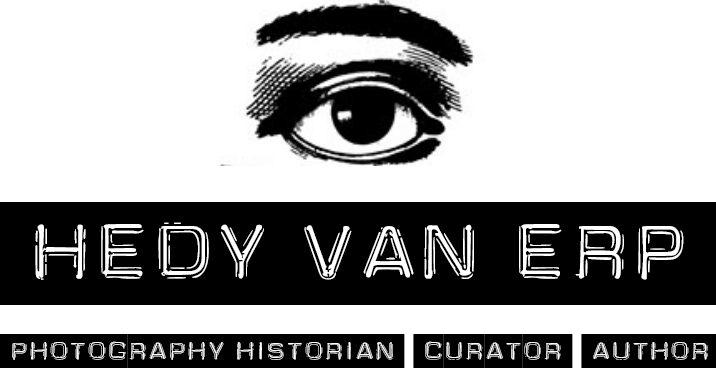Tinted passport photograph of an unidentified woman, 1945-1955
I'm a photo historian, curator and author from the Netherlands. In the 1990s, I founded the first photo agency dedicated to art photography, representing a.o. Viviane Sassen, Rineke Dijkstra and Blommers/Schumm. As a curator I worked on exhibitions for museums such as the Nederlands Fotomuseum, Rotterdam; Fotomuseum The Hague; the National Media Museum, UK; the Science Museum, London and the Hermitage Amsterdam.
To better understand the complexity of photography, I have always investigated - and loved - the ubiquitous, but still remarkably understudied category of photographs taken by ordinary people. Photos from our homes and hearts, but rarely in our museums. Personal and amateur photography play equally important roles in our social history as do art, press and advertising photography.
Therefore my book Photography Decoded (Tate Publishing, London, 2019), co-authored with Susan Bright, looks at photography from all possible viewpoints. In my book Androids & Crayons (Van Zoetendaal Publishers, 2022) I combine crayon portraits from around 1900 with Wanda Tuerlinckx's portraits of androids.
Supported by the Mondriaan Fund, I've been researching a number of photo archives for new exhibitions and publications. I've shared some of my finds in the international photozine Dog Food, at the Bristol Photo Festival, in the new Fotozini photozine - and there's more to come. But first, a photo from my home and heart.
L-R: Guy van Erp, Albert van Erp and Rosa van Erp-Stuber at Lake Lucerne, ca. 1938
HAPPINESS IS A WARM GUN
In times of general low spirits, it may help to know that things could be worse. This 1950's Polaroid, from the collection of the late, unparalleled Frido Troost always does the trick for me. After all, the best thing about found photography is that you can indulge in carefree interpretation.
At first glance, this image depicts an extremely happy moment, one of the highlights in life: the birth of a healthy baby. However, there is a dark edge to this photograph, and not only literally. The man who shows a newborn baby, decided to do so in a particular corner of his house. By choosing his rifle collection for a background, the meaning of this photograph changes dramatically: his wife and the newborn baby become his hunting trophies.
The contrasts in this photo make it even more powerful. A figurine of a baby lies sleeping against the trigger of a shotgun. The tiny innocent baby is a bonsai version of his impressive (grand)father, with matching hairlines. The man’s strangling clasp forces his wife to show her affection in an incapacitated manner. Let’s hope they had a long and happy marriage.
1950s Polaroid from the Frido Troost Collection
